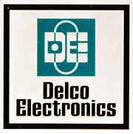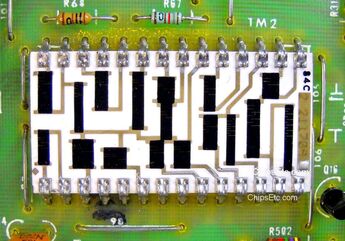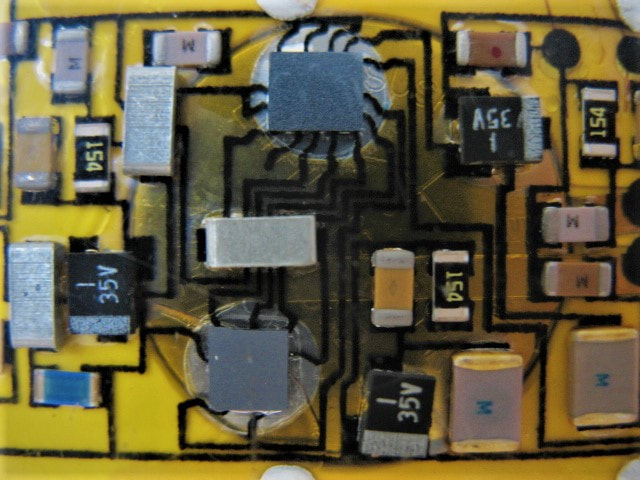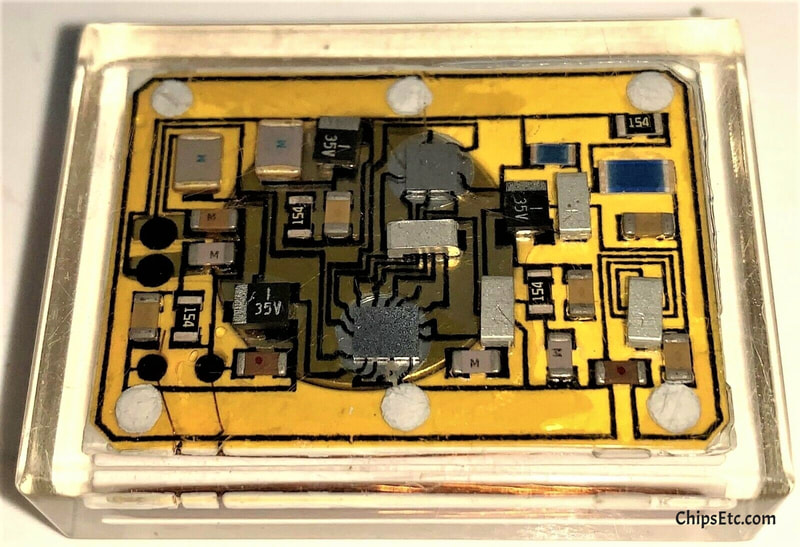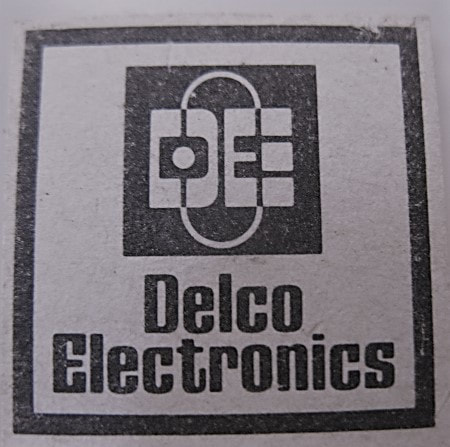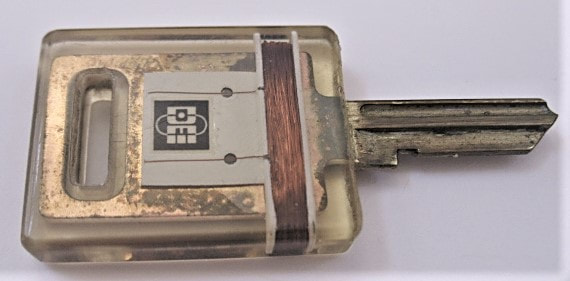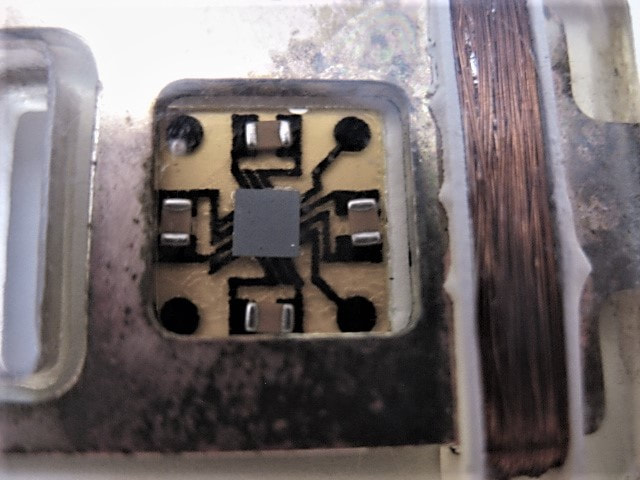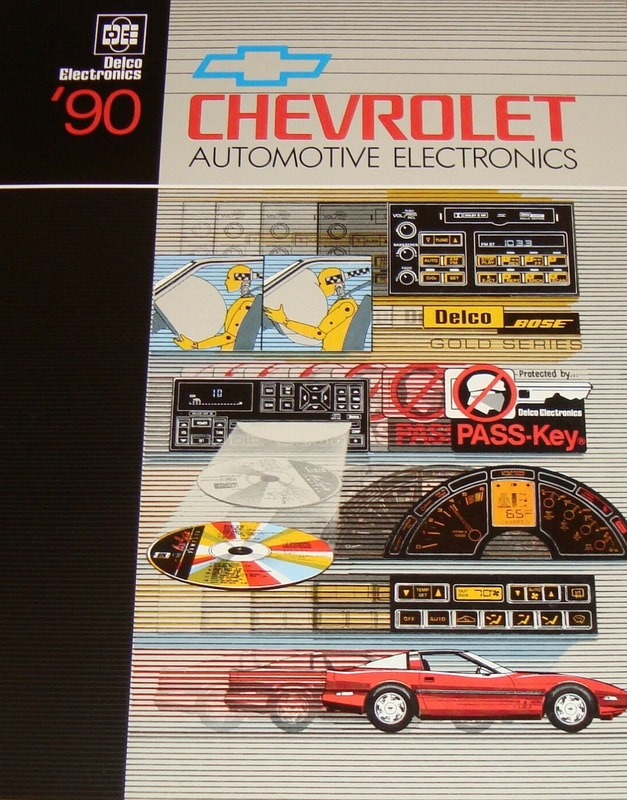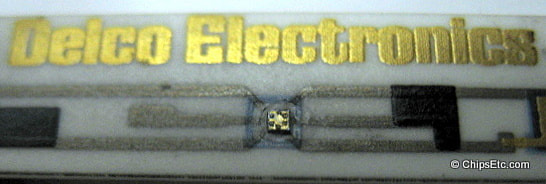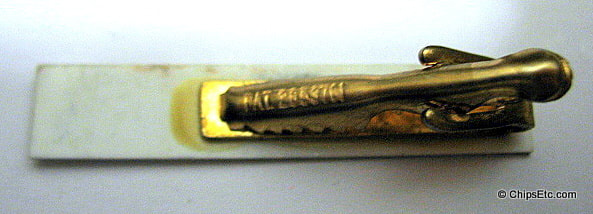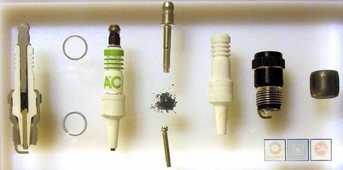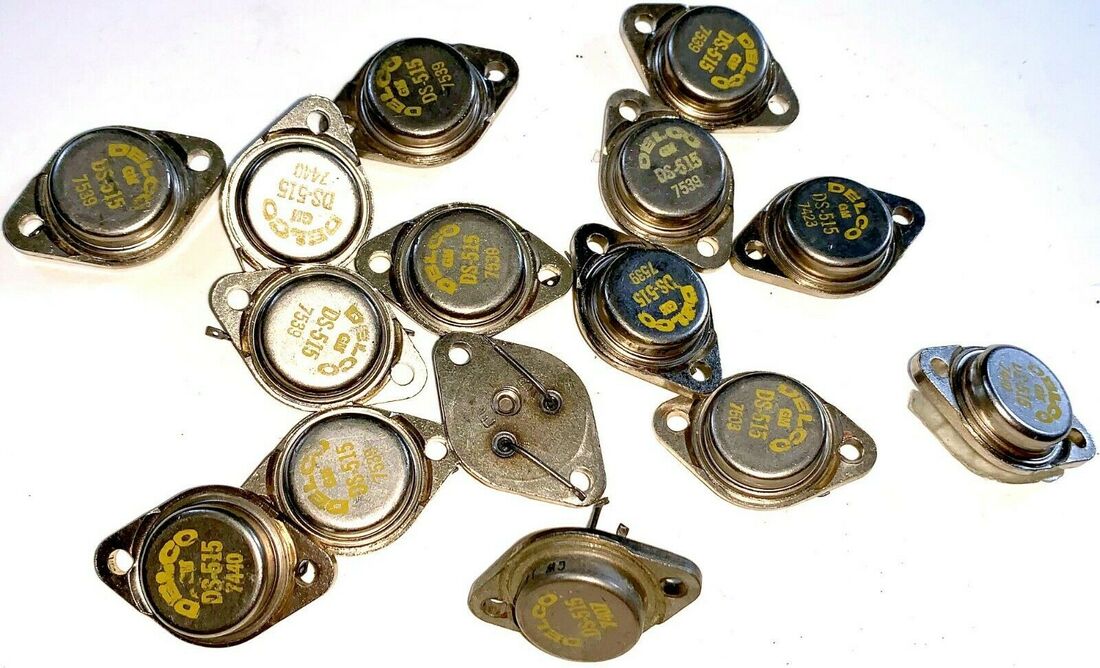|
Company: Delco Electronics Corporation
Based: Dayton, OH. Founded: 1909 (as Dayton Engineering Laboratories Co.) Founders: Charles Kettering and Edward A. Deeds Specialty: Delco Electronics (a GM subsidy) invented the first automotive electrical ignitions. Was the automotive electronics design and manufacturing subsidiary of General Motors based in Kokomo, Indiana, that manufactured Delco radios and other electric products found in GM cars. In 1972, General Motors merged it with the AC Electronics division and it continued to operate as part of the Delco Electronics division of General Motors. |
Delco Electronics early automotive ignition system transponder sample (Mid 1990s)
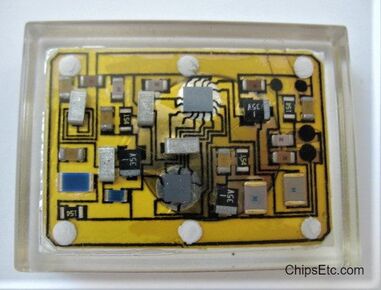
Item #1014
Lucite paperweight from Delco Electronics.
This hybrid integrated circuit device would have been located in the dash near the ignition key location, and along with the associated transponder key (next item shown below), would work together to form one of the early examples of an RFID automotive ignition security system, later to become know as the GM Pass-Key III.
In 1985, GM purchased Hughes Aircraft and merged it with Delco Electronics to form Hughes Electronics Corp., an independent subsidiary.
Delco Electronics early chip transponder car key protoype (Mid 1990s)
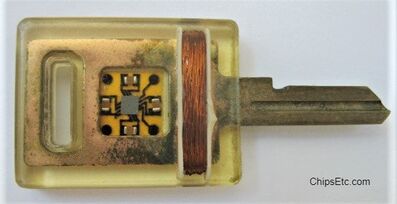
Item #1013
Clear Lucite Prototype from a 30-year Delco Electronics Engineer that did research and development for GM's first vehicle security RFID transponder car key and ignition module system.
The Chevrolet Corvette was the first GM car model to get the first VATS (vehicle anti theft system) in 1986, called the Pass-Key I (and a later version, the Pass-Key II). The car's key had a resistor built in that had one of 15 resistance values that the ignition system would look for in order to start. It was so successful at deterring thefts that GM would put it in many of it's models by 1988.
But unfortuantely, the resistors were prone to failure. By 1989, Dallas Semiconductor started working with Delco Electronics to develop electronic circuit device with chips small enough to carry on a car's key chain.
By the mid 1990s, more advanced transponder systems and other anti-theft systems were being developed. The next evolution in vehicle anti theft systems was to replace the transistor in the key with a small RFID system, as seen in this prototype example that would lead to the creation of the Pass-Key III anti-theft system.
The Pass-Key III (PSK3) anti-theft system used a transponder inside the body of the ignition key. The exciter coil inside the ignition lock cylinder would energize the transponder when the ignition switch is turned on. The transponder then transmits back a unique code to the theft deterrent control module (TDM). If the code transmitted is correct then the control module would transmit the code to the PCM (Powertrain Control Module) and then vehicle would start.
In 1996, Delco Electronics introduced their new Pass-Key III anti-theft key system to the public in their Delco Electronics SSC concept vehicle. The SSC concept vehicle was created to showcase numerous security, safety, and linked communcations technologies developed by Delco for use in upcoming GM automobiles.
The first GM production car produced with a Pass-Key III transponder key system was the 1997 Buick Park Avenue.
Clear Lucite Prototype from a 30-year Delco Electronics Engineer that did research and development for GM's first vehicle security RFID transponder car key and ignition module system.
The Chevrolet Corvette was the first GM car model to get the first VATS (vehicle anti theft system) in 1986, called the Pass-Key I (and a later version, the Pass-Key II). The car's key had a resistor built in that had one of 15 resistance values that the ignition system would look for in order to start. It was so successful at deterring thefts that GM would put it in many of it's models by 1988.
But unfortuantely, the resistors were prone to failure. By 1989, Dallas Semiconductor started working with Delco Electronics to develop electronic circuit device with chips small enough to carry on a car's key chain.
By the mid 1990s, more advanced transponder systems and other anti-theft systems were being developed. The next evolution in vehicle anti theft systems was to replace the transistor in the key with a small RFID system, as seen in this prototype example that would lead to the creation of the Pass-Key III anti-theft system.
The Pass-Key III (PSK3) anti-theft system used a transponder inside the body of the ignition key. The exciter coil inside the ignition lock cylinder would energize the transponder when the ignition switch is turned on. The transponder then transmits back a unique code to the theft deterrent control module (TDM). If the code transmitted is correct then the control module would transmit the code to the PCM (Powertrain Control Module) and then vehicle would start.
In 1996, Delco Electronics introduced their new Pass-Key III anti-theft key system to the public in their Delco Electronics SSC concept vehicle. The SSC concept vehicle was created to showcase numerous security, safety, and linked communcations technologies developed by Delco for use in upcoming GM automobiles.
The first GM production car produced with a Pass-Key III transponder key system was the 1997 Buick Park Avenue.
DELCO Electronics Integrated Circuit Chip Tie Bar
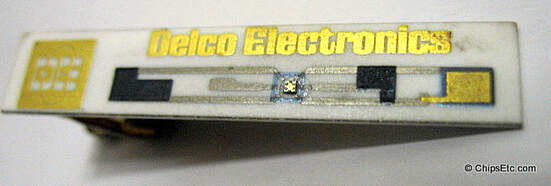
Item # 1008 & 1009
Tie bar clip from DELCO Electronics features one of their integrated circuit chips mounted on a piece of ceramic with thin-film components, with gold trace circuitry and the DELCO Electronics logo.
GM AC-Delco automotive Spark Plug Components Paperweight (1974)
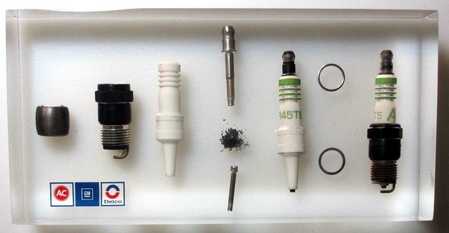
Sold
Lucite paperweight from GM's automotive parts brand, AC-Delco, showing the components that go into manufacturing their ceramic automtotive spark plugs.
